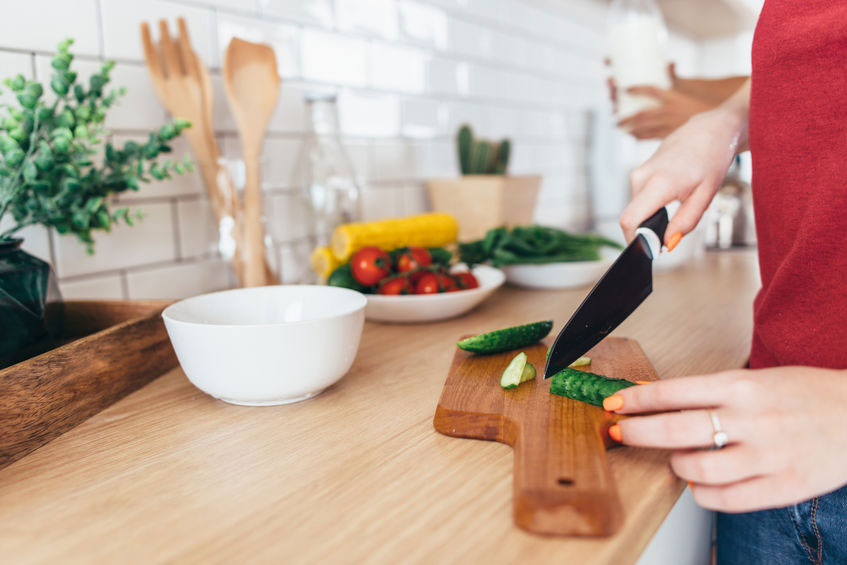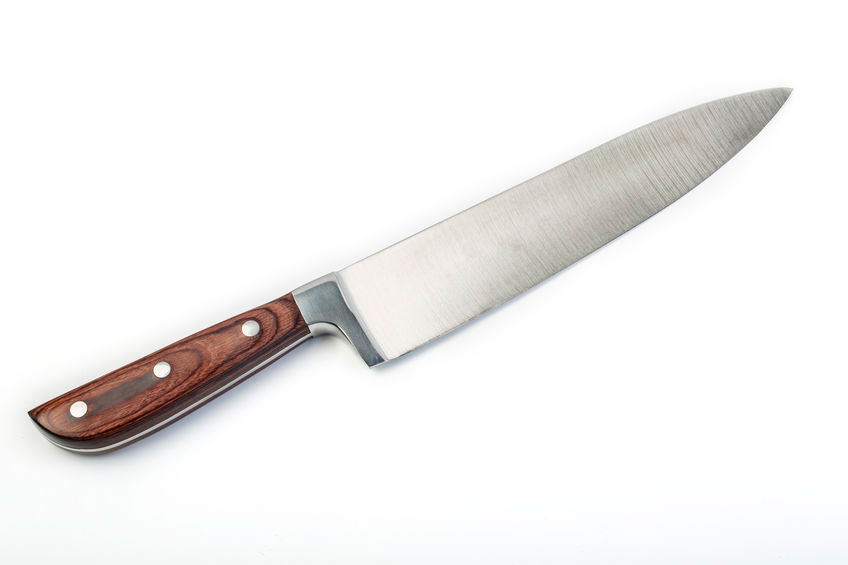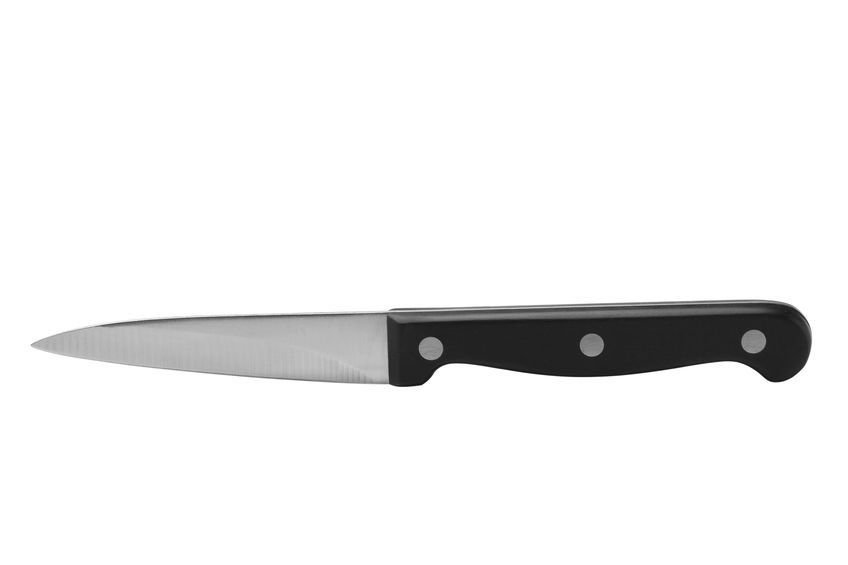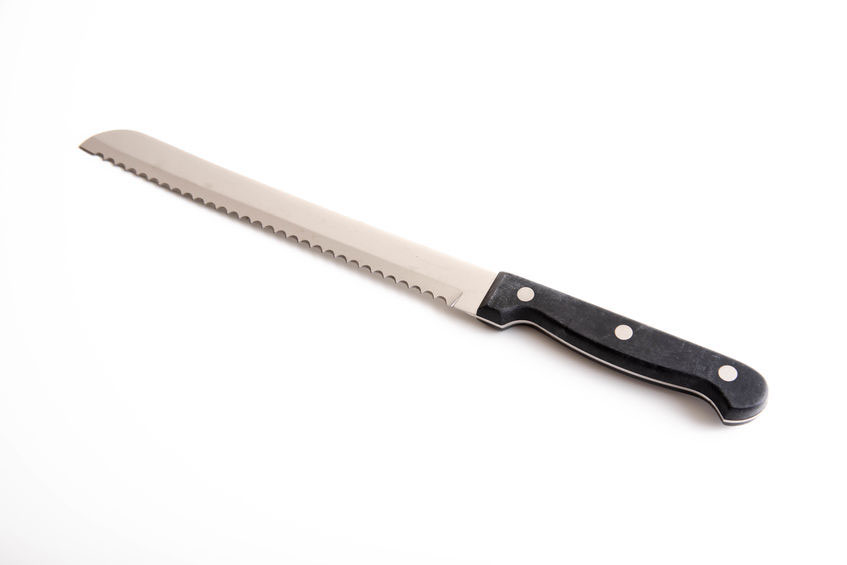A good knife is the essential tool that all cooks rely on for success in the kitchen. From cutting vegetables, chopping herbs, mincing aromatics, peeling fruit, coring tomatoes, deveining shrimp, slicing tomatoes, or breezing through a crusty loaf of bread, there are truly just three kitchen knives that you need. The number one rule in kitchen cutlery: always choose the right tool for the task. The goal of this article is to show you the essential three knives you will ever need that will enable you to perform nearly every kitchen task more effectively.
The chef’s knife
This is the quintessential knife that will become your most-used kitchen tool. Just ask any professional cook about their favorite knife and more than likely they will tell you all about the chef’s knife. It is the one that most cooks reach for more often than any other. This knife will likely become an extension of your hand. The thing that sets this knife apart is its shape. With a long, curved blade that starts wide closest to the handle and tapering to a point at the tip, the chef’s knife is designed to rock back and forth on your cutting board for chopping and mincing. The wide portion of the knife is also the sturdiest which is going to serve you well when working your way through root vegetables, while the thinner part of the tip will help you when you are scoring an onion for dicing or other detailed work.
Chef’s knives vary in size from 6 to 10 inches generally. An 8-inch knife will suit most cooks quite comfortably, though more petite cooks may opt for a smaller blade. The best kitchen knife will always be the one that feels good in your hand.
The pairing knife
The paring knife is the go-to knife for small tasks that may require a finer, more controlled touch. It is the tool to choose for delicate knife work like peeling kiwi, hulling strawberries, deveining shrimp or coring a tomato when a large knife would prove to be too unwieldy.
The blade of this knife is rather thin and generally about 3-4 inches long. Because of the length of the blade and the way the knife fits into your hand, it provides better control as you are able to keep your hand closer to whatever you are cutting or peeling.
The serrated knife
The serrated knife is often referred to as a bread knife. With its long blade and jagged teeth, it will certainly cut through a crusty loaf of sourdough or a more delicate sandwich bread with great ease. It is worth noting, however, that this knife has other applications that make an essential knife for the home cook. If you have ever tried to cut a ripe tomato with a non-serrated knife this will be a game changer. The teeth will breeze through the skin with ease. Beyond this, the serrated knife will come in handy when peeling a whole watermelon or a pineapple when a chef’s knife just won’t do.
Serrated knives come in a variety of lengths, but the sweet spot tends to be between 9-10 inches. This size would handily allow you to cut a substantial loaf of bread without being too long to slice a tomato to your liking.
With proper care and knife skills, these three essential kitchen knives will serve you well, making your cooking more fun, safe, and productive.



